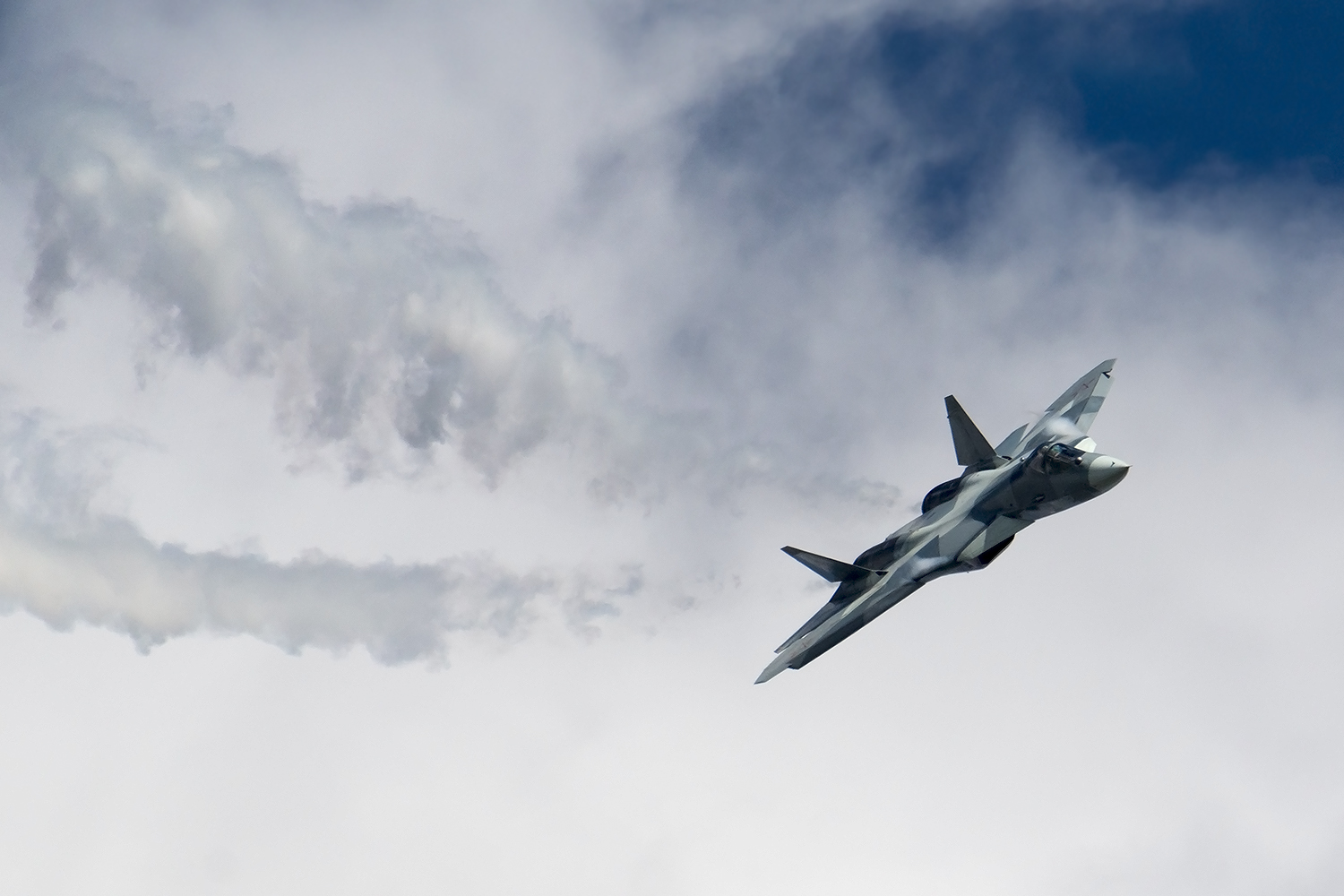The Su-57: Russia’s Fifth-Generation Fighter Jet Unveiled
The Sukhoi Su-57 is a marvel of modern aviation technology, representing Russia’s most advanced foray into the world of fifth-generation fighter jets. This article will delve into the intricacies of the Su-57, exploring its design, capabilities, and the role it plays in the global military landscape.
Key Takeaways
- The Su-57 is Russia’s first fifth-generation fighter jet, designed for air superiority and multi-role missions.
- It features advanced stealth technology, supercruise capability, and integrated avionics systems.
- The Su-57 is equipped with cutting-edge weaponry, enhancing its operational versatility.
- Russia aims to bolster its air force capabilities with the Su-57, increasing its competitiveness on the global stage.
An Overview of the Su-57
The Su-57, developed by Sukhoi, is a fifth-generation multirole fighter aircraft designed to excel in air superiority and attack missions. The aircraft is known for its stealth capabilities, advanced avionics, and superior maneuverability, making it a formidable presence in the sky.
Design and Development
The development of the Su-57 began in the early 2000s as part of Russia’s PAK FA (Prospective Aviation Complex of Frontline Aviation) program. The aircraft made its maiden flight in 2010 and has since undergone numerous tests and refinements to meet the demanding requirements of modern aerial warfare.
One of the standout features of the Su-57 is its stealth design. The aircraft incorporates radar-absorbing materials and a reduced radar cross-section, allowing it to evade enemy detection. Additionally, the Su-57’s aerodynamics are optimized for high agility and speed, making it a versatile platform for various combat scenarios.
Advanced Avionics and Systems
The Su-57 is equipped with cutting-edge avionics systems that enhance its situational awareness and combat effectiveness. The aircraft features an integrated avionics suite that includes a multifunctional radar, electronic warfare systems, and a state-of-the-art cockpit interface. These systems work in tandem to provide the pilot with real-time information and superior control over the aircraft’s operations.
Moreover, the Su-57 is capable of supercruise, allowing it to maintain supersonic speeds without the use of afterburners. This capability not only conserves fuel but also reduces the aircraft’s infrared signature, further enhancing its stealth characteristics.
Armament and Combat Capabilities
The Su-57 is armed with a diverse array of weaponry, making it a versatile platform for both air-to-air and air-to-ground missions. The aircraft can carry a variety of missiles, bombs, and precision-guided munitions, enabling it to engage a wide range of targets with precision and lethality.
- Air-to-Air Missiles: The Su-57 can be equipped with advanced air-to-air missiles, such as the R-77 and R-73, allowing it to engage enemy aircraft at various ranges.
- Air-to-Ground Weapons: For ground attack missions, the Su-57 can carry guided bombs and missiles, including the Kh-38 and Kh-59, providing it with the capability to strike ground targets with high accuracy.
- Internal Weapon Bays: The aircraft’s stealth design is complemented by internal weapon bays, which reduce drag and maintain its low radar signature while carrying a full complement of armaments.
The Su-57 in Global Context

The introduction of the Su-57 into the Russian Air Force marks a significant milestone in Russia’s military aviation capabilities. As the first fifth-generation fighter jet developed by Russia, the Su-57 is intended to counterbalance the advances made by other nations in stealth and multirole aircraft technology, such as the United States’ F-22 Raptor and F-35 Lightning II.
Strategic Importance
The Su-57 is designed to enhance Russia’s air superiority and provide a strategic edge in potential conflicts. Its advanced capabilities make it a key asset in Russia’s efforts to modernize its military forces and maintain a competitive stance on the global stage.
Furthermore, the Su-57 is expected to play a pivotal role in Russia’s export strategy, with potential sales to allied nations. This not only bolsters Russia’s defense industry but also strengthens its geopolitical influence through strategic partnerships.
Challenges and Future Prospects

Despite its advanced features, the Su-57 program has faced several challenges, including production delays and budget constraints. These issues have affected the aircraft’s deployment timeline and raised questions about its long-term viability.
However, Russia remains committed to the Su-57 project, with plans to integrate further advancements in technology and increase production rates. As the aircraft continues to evolve, it is expected to incorporate new features such as enhanced artificial intelligence systems and improved stealth capabilities, ensuring its relevance in future combat scenarios.
The Su-57 stands as a testament to Russia’s engineering prowess and ambition in the field of military aviation. With its blend of stealth, speed, and firepower, the Su-57 is poised to play a crucial role in shaping the future of aerial warfare. As it continues to enter service and evolve, the Su-57 will undoubtedly remain a focal point of interest and analysis within the global defense community.
